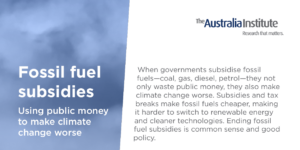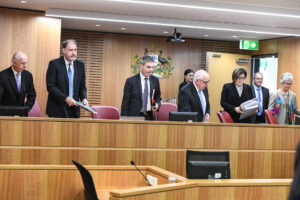Surging mining sector profits are distorting Australia’s economy.
Share
Profits in the mining sector are surging, but output is not – and the increased prices come at a cost to the rest of the economy
The dramatic rise in global prices for various minerals (especially oil, gas, and coal) since the COVID-19 pandemic has caused an equally dramatic aftershock in the make-up of Australia’s economy. The share of national nominal GDP arising from the mining sector has expanded exponentially. In 2022, mining sector gross value-added accounted for over 15% of the national total across all sectors. That’s three times its share at the turn of the century, and almost twice its share as recently as 2018.
The rapid expansion of the nominal value of mining sector output has been driven almost entirely by inflation in mining prices – not by increases in real output. In fact, in three years since the pandemic (from December 2019 through December 2022), real output from the mining sector grew less than 1%. But nominal value-added swelled over 80%. The sector is not producing more – but it is charging a lot more for what it already produced.
That inflation corresponds to a mind-blowing expansion in mining profits. Over 80% of gross value-added in the industry is now captured by corporations in gross operating profits. Those profits grew 89% since end-2019, reaching $295 billion in 2022 (or over 12% of Australia’s GDP). Incredibly, over half of the total corporate profits across the entire Australian economy are now captured by firms (mostly energy firms) in the mining sector.
Lest anyone conclude that the enormous inflation in nominal output from the mining sector is somehow a ‘good news’ story, keep these facts in mind:
- A large share of mining profits (that eat up the lion’s share of total output) is exported to foreign owners of Australian-based mining and energy businesses, and never set foot in Australia’s economy.
- The RBA recently noted that “a large share” of mining profits have been “remitted to foreign shareholders”.
- The inflation of mining and energy prices was the leading edge of the surge in post-COVID inflation, that has undermined real incomes of Australians and led to eleven painful interest rate hikes by the Reserve Bank.
- The share of mining revenues going to workers (in the form of wages and other labour compensation) has shrunk dramatically: falling from 13% in 2015 to just 6% in 2022.
In sum, this new boom in the mining sector is very much a paper boom: it reflects rising prices, not real production, and it badly distorts the whole structure of Australia’s economy. Putting caps on energy prices and profits (to prevent economy-wide inflation), taxing back some of the sector’s enormous profits (to fund public services and renewable energy investments), and lifting wages for mining workers (and all other workers) to restore fairer income distribution, are all ways to limit the consequences from this abuse of corporate pricing power.
Related research
Between the Lines Newsletter
The biggest stories and the best analysis from the team at the Australia Institute, delivered to your inbox every fortnight.
You might also like
Fossil fuel subsidies
When governments subsidise fossil fuels—coal, gas, diesel, petrol—they not only waste public money, they also make climate change worse. Subsidies and tax breaks make fossil fuels cheaper, making it harder to switch to renewable energy and cleaner technologies. Ending fossil fuel subsidies is common sense and good policy.
The continuing irrelevance of minimum wages to future inflation
Minimum and award wages should grow by 5 to 9 per cent this year
Why a fossil fuel-free COP could put Australia’s bid over the edge
When the medical world hosts a conference on quitting smoking, they don’t invite Phillip Morris, or British American Tobacco along to help “be part of the solution”.


